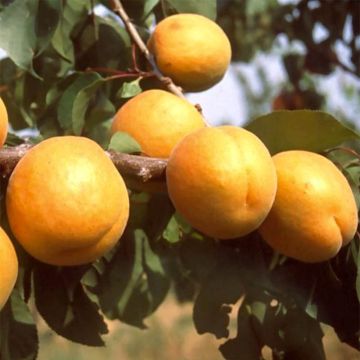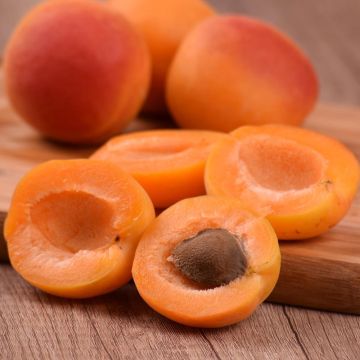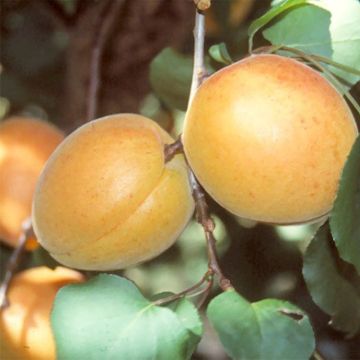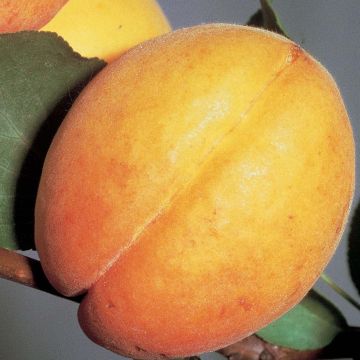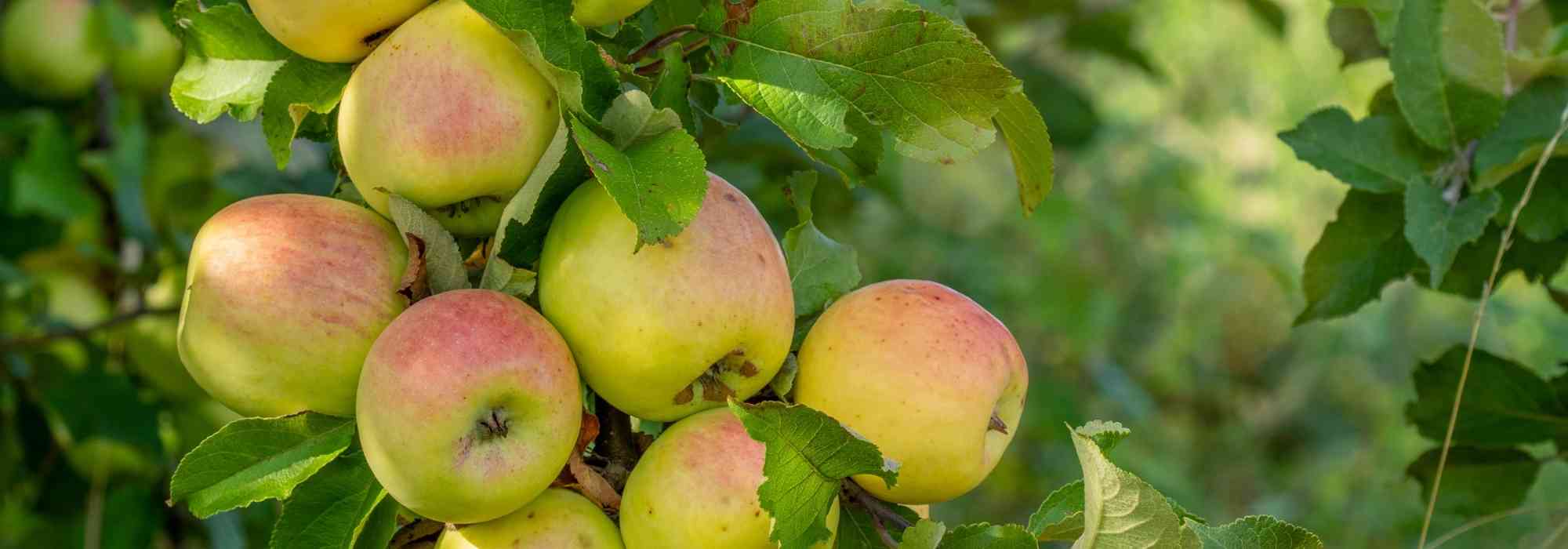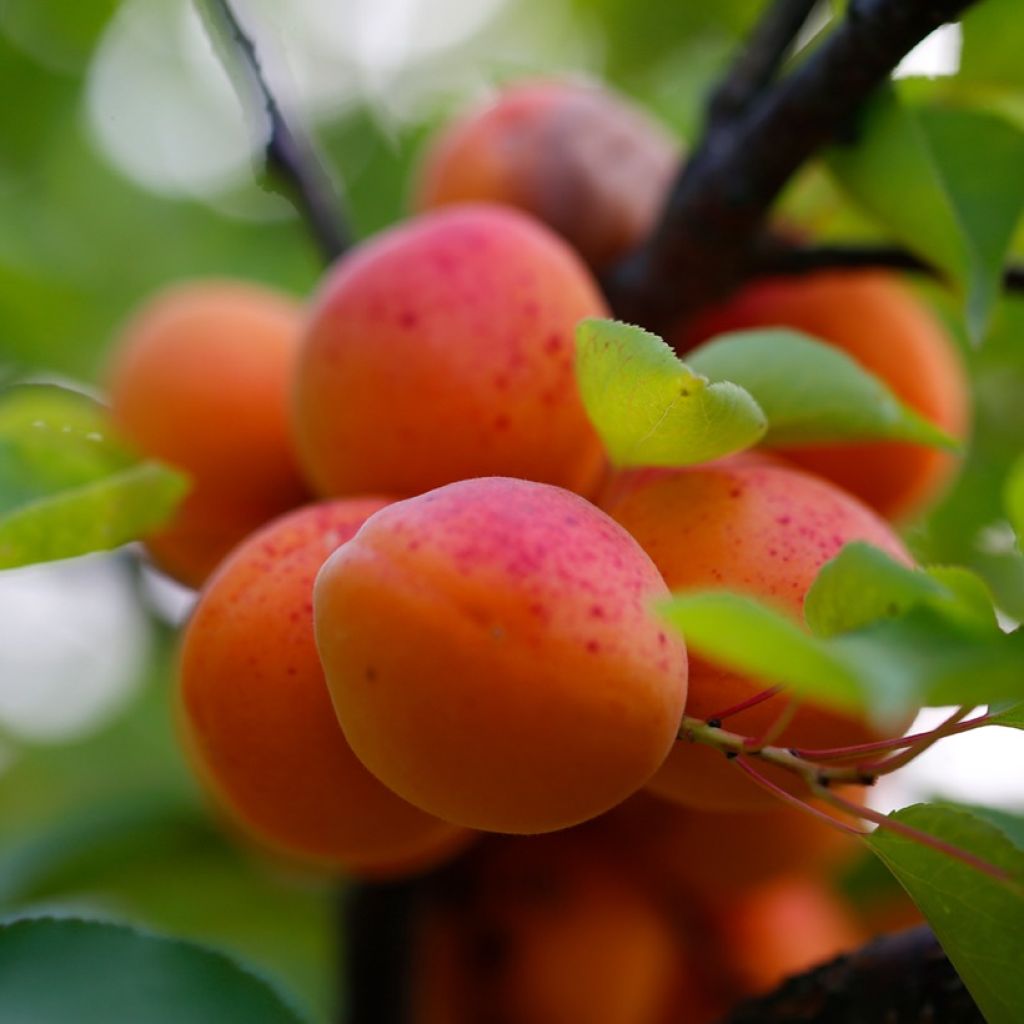

Prunus armeniaca Early Orange - Apricot Tree
Prunus armeniaca Early Orange - Apricot Tree
Prunus armeniaca Early Orange
Apricot, Armenian plum
Special offer!
Receive a €20 voucher for any order over €90 (excluding delivery costs, credit notes, and plastic-free options)!
1- Add your favorite plants to your cart.
2- Once you have reached €90, confirm your order (you can even choose the delivery date!).
3- As soon as your order is shipped, you will receive an email containing your voucher code, valid for 3 months (90 days).
Your voucher is unique and can only be used once, for any order with a minimum value of €20, excluding delivery costs.
Can be combined with other current offers, non-divisible and non-refundable.
Why not try an alternative variety in stock?
View all →This plant carries a 6 months recovery warranty
More information
We guarantee the quality of our plants for a full growing cycle, and will replace at our expense any plant that fails to recover under normal climatic and planting conditions.
Description
The Early Orange Apricot Tree is ornamental with its spectacular spring flowering and a fruit tree that stands out for its remarkable ability to produce an abundance of delicious fruits. It bears fruit quickly, offering a harvest from the first years. The apricots have a medium size, measuring about 4 to 6 cm in diameter and weighing between 30 and 45 g. They have an oblong shape and velvety, reddish-orange skin. The firm, juicy, sweet and slightly acidic flesh surrounds a flat and rough stone containing an edible almond. The fruits are delicious when consumed fresh, but they are also very suitable for use in pastries and for making jams or jellies. Hardy down to -15°C, it is easy to grow in a warm and sunny location, in well-drained soil, even if it contains limestone. Moreover, it is self-fertile.
Prunus armeniaca, more commonly known as the Common Apricot Tree, belongs to the Rosaceae family, like the peach tree, cherry tree, apple tree. It originates from Central and Eastern Asia, particularly from China where it has been growing since 3000 BC. It was introduced to the Mediterranean basin and especially to Armenia, then to France in the 16th century.
The variety 'Early Orange', sometimes called 'Stark Early Orange', has North American origins, which gives it good hardiness. It forms a spreading tree that can reach 4 to 5 m in height and 3 to 4 m in width. Its deciduous foliage is composed of 6 to 10 cm long, alternate, ovate to elliptical, heart-shaped, irregularly toothed leaves, bronze-coloured at bud burst, then shiny medium green, taking on yellow-orange autumnal shades. The early flowering occurs around mid-March, before the leaves appear, which can expose it to spring frosts. The single, white, 2 to 3 cm in diameter flowers appear solitarily on 1-year-old branches. They can be destroyed by frost from -2 to -3°C, so it is recommended to plant apricot trees in a sheltered location, facing west and protected from cold winds in regions that experience late frosts. Nevertheless, the very abundant flowering often results in satisfactory fruiting. It is a remarkably decorative flowering in spring, and particularly nectar-rich. This hardy tree can withstand temperatures around -15°C. It is self-fertile, the flowers can fertilise themselves, it does not need a companion to fruit, but the presence of another variety of apricot tree nearby will increase production.
Early Orange Apricot is a very productive variety, with rapid fruiting, around 2 to 3 years, becoming optimal after 5 to 6 years. The fruit is attached to the branch by a very short petiole. Harvesting begins around mid-July and extends until early August. It is important to pick the fruits only when they are ripe, golden, tender to the touch, and easy to detach from the tree. Apricots must be carefully harvested by hand.
Juicy, sweet and subtly acidic, this apricot is delicious to eat fresh, right after picking, as it does not keep for long. In cooking, it reveals all its flavours in the making of clafoutis, cakes, crumbles or pies, fruit salads and as an accompaniment to savoury dishes based on white meats (turkey, chicken, veal, duck, rabbit...) or cheeses. They are also perfect for making jams, marmalades, jellies or preserved. Refreshing apricot juices are mixed with a touch of peach juice to break the natural acidity of the apricot. Its content of beta-carotene, vitamins A, B and C, phenolic antioxidants, calcium, magnesium and potassium, with a significant supply of iron, and its richness in trace elements and fibre, make apricot a healthy choice. The fruits can be stored for 2 to 3 weeks in a cool and airy place or in the refrigerator. They can also be frozen or dried, once washed and pitted.
Apricots are summer fruits that are enjoyed by both children and adults. With a wide range of apricot trees available, it is easy to find the variety that best suits. The Early Orange Apricot Tree stands out for its resistance to diseases. It is tolerant to Sharka virus (PPV), bacterial spot (Xanthomonas pruni), and brown rot of stone fruits (Monilinia laxa).
Plant habit
Fruit
Flowering
Foliage
Botanical data
Prunus
armeniaca
Early Orange
Rosaceae
Apricot, Armenian plum
Prunus armeniaca Stark Early Orange
Cultivar or hybrid
Other Apricot trees
View all →Planting and care
The easy to grow Apricot Tree Early Orange thrives in all types of soils, including rocky and slightly chalky soils. It prefers moist, light soils and is sensitive to heavy and clayey soils. Choose a sunny location. To limit the risk of late frost damage to the flowers, it is recommended to plant the apricot tree in a sheltered position, facing west and protected from cold winds in regions that experience spring frosts. Planting is best done in autumn or, if not possible, in winter, when the tree is in a dormant state, outside the frost period. If you plant multiple trees, space them 5 to 6 metres apart.
Loosen the soil deeply, remove rocks and unwanted weeds. Add some sand to improve drainage. Dig a hole 4 to 5 times the volume of the root ball. Keep the subsoil on one side and the topsoil on the other side. Mix crushed horn or well-rotted compost or potting soil with the subsoil and pour this mixture into the planting hole. Install a stake. Place the root ball, cover with the topsoil and firm it down. Water generously (about 10 litres). Position your tying system, crossing it in a figure of 8, so that the trunk and the stake do not rub against each other.
During cultivation, watering is not necessary except in extreme heat. Mulch at the base to retain moisture in summer.
The apricot tree can be susceptible to various diseases. Spray preventive doses of Bordeaux mixture and horsetail decoctions to combat peach leaf curl (swollen leaves) and brown rot (drying of flowers and rotting of fruits on the tree). If you notice gum flow, clean the gum, remove the affected parts, and apply a healing agent.
Planting period
Intended location
Care
Planting & care advice
This item has not been reviewed yet - be the first to leave a review about it.
Haven't found what you were looking for?
Hardiness is the lowest winter temperature a plant can endure without suffering serious damage or even dying. However, hardiness is affected by location (a sheltered area, such as a patio), protection (winter cover) and soil type (hardiness is improved by well-drained soil).

Photo Sharing Terms & Conditions
In order to encourage gardeners to interact and share their experiences, Promesse de fleurs offers various media enabling content to be uploaded onto its Site - in particular via the ‘Photo sharing’ module.
The User agrees to refrain from:
- Posting any content that is illegal, prejudicial, insulting, racist, inciteful to hatred, revisionist, contrary to public decency, that infringes on privacy or on the privacy rights of third parties, in particular the publicity rights of persons and goods, intellectual property rights, or the right to privacy.
- Submitting content on behalf of a third party;
- Impersonate the identity of a third party and/or publish any personal information about a third party;
In general, the User undertakes to refrain from any unethical behaviour.
All Content (in particular text, comments, files, images, photos, videos, creative works, etc.), which may be subject to property or intellectual property rights, image or other private rights, shall remain the property of the User, subject to the limited rights granted by the terms of the licence granted by Promesse de fleurs as stated below. Users are at liberty to publish or not to publish such Content on the Site, notably via the ‘Photo Sharing’ facility, and accept that this Content shall be made public and freely accessible, notably on the Internet.
Users further acknowledge, undertake to have ,and guarantee that they hold all necessary rights and permissions to publish such material on the Site, in particular with regard to the legislation in force pertaining to any privacy, property, intellectual property, image, or contractual rights, or rights of any other nature. By publishing such Content on the Site, Users acknowledge accepting full liability as publishers of the Content within the meaning of the law, and grant Promesse de fleurs, free of charge, an inclusive, worldwide licence for the said Content for the entire duration of its publication, including all reproduction, representation, up/downloading, displaying, performing, transmission, and storage rights.
Users also grant permission for their name to be linked to the Content and accept that this link may not always be made available.
By engaging in posting material, Users consent to their Content becoming automatically accessible on the Internet, in particular on other sites and/or blogs and/or web pages of the Promesse de fleurs site, including in particular social pages and the Promesse de fleurs catalogue.
Users may secure the removal of entrusted content free of charge by issuing a simple request via our contact form.
The flowering period indicated on our website applies to countries and regions located in USDA zone 8 (France, the United Kingdom, Ireland, the Netherlands, etc.)
It will vary according to where you live:
- In zones 9 to 10 (Italy, Spain, Greece, etc.), flowering will occur about 2 to 4 weeks earlier.
- In zones 6 to 7 (Germany, Poland, Slovenia, and lower mountainous regions), flowering will be delayed by 2 to 3 weeks.
- In zone 5 (Central Europe, Scandinavia), blooming will be delayed by 3 to 5 weeks.
In temperate climates, pruning of spring-flowering shrubs (forsythia, spireas, etc.) should be done just after flowering.
Pruning of summer-flowering shrubs (Indian Lilac, Perovskia, etc.) can be done in winter or spring.
In cold regions as well as with frost-sensitive plants, avoid pruning too early when severe frosts may still occur.
The planting period indicated on our website applies to countries and regions located in USDA zone 8 (France, United Kingdom, Ireland, Netherlands).
It will vary according to where you live:
- In Mediterranean zones (Marseille, Madrid, Milan, etc.), autumn and winter are the best planting periods.
- In continental zones (Strasbourg, Munich, Vienna, etc.), delay planting by 2 to 3 weeks in spring and bring it forward by 2 to 4 weeks in autumn.
- In mountainous regions (the Alps, Pyrenees, Carpathians, etc.), it is best to plant in late spring (May-June) or late summer (August-September).
The harvesting period indicated on our website applies to countries and regions in USDA zone 8 (France, England, Ireland, the Netherlands).
In colder areas (Scandinavia, Poland, Austria...) fruit and vegetable harvests are likely to be delayed by 3-4 weeks.
In warmer areas (Italy, Spain, Greece, etc.), harvesting will probably take place earlier, depending on weather conditions.
The sowing periods indicated on our website apply to countries and regions within USDA Zone 8 (France, UK, Ireland, Netherlands).
In colder areas (Scandinavia, Poland, Austria...), delay any outdoor sowing by 3-4 weeks, or sow under glass.
In warmer climes (Italy, Spain, Greece, etc.), bring outdoor sowing forward by a few weeks.






























